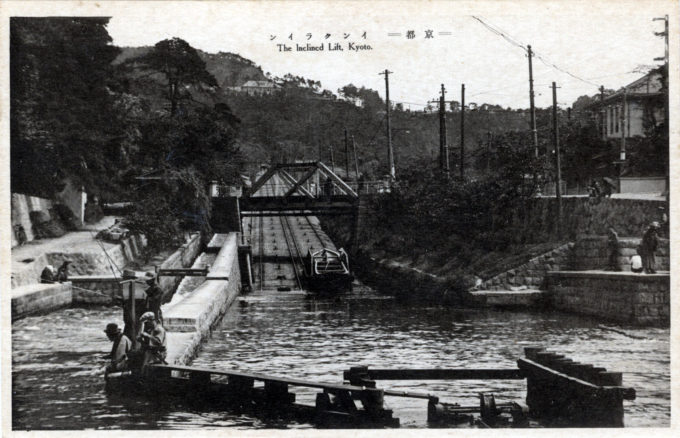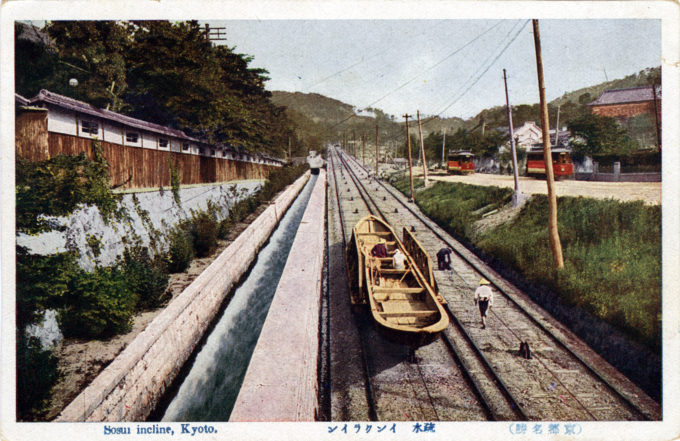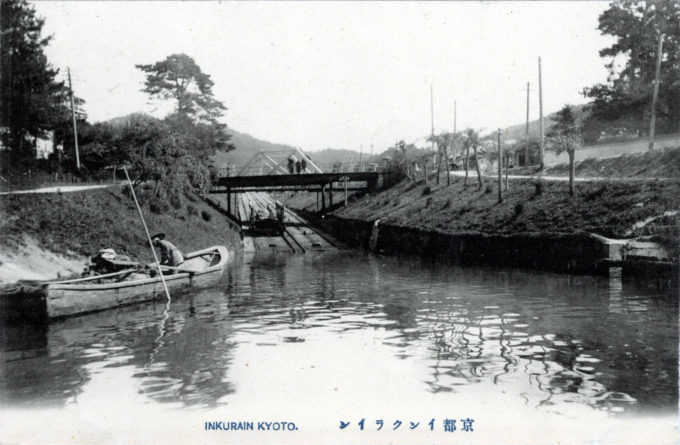See also:
Lake Biwa Canal, Otsu, c. 1910-1920
“Transportation and civil engineering are other areas where Kyoto has shown great innovation. A canal built in 1890 to connect the city to Lake Biwa and supply it with hydroelectric power attracted worldwide attention in its day. Now, more than a century later, the twelve-mile (twenty-kilometer) Sosui Canal and its power station continue to work as before. As early as the 1920s, the development of other means of transporting goods changed the canal’s primary role of water transportation to one of supplying the city with drinking water, which it still fulfills.
“Today, by the Eastern Hills of the city, one can enjoy a tranquil stroll along a shaded branch of the canal known as Philosopher’s Path, named for the eminent philosopher Nishida Kitaro (1870-1945), a professor at nearby Kyoto University who, for many years, made it his practice to walk there every morning.
“… Thanks to the power plant, Kyoto became the first city in Japan to have trams powered by electricity. In 1895, Kyoto introduced the nation’s first streetcars, nicknamed chin-chin ensha, or ‘ding-ding trains,’ because of the sound of the bell rung by motormen.”
– Seeing Kyoto, by Juliet Winters Carpenter, 2005
“Lake Biwa Canal (Biwako Sosui) was constructed during the Meiji Period to transport water, freight, and passengers from Lake Biwa to the nearby City of Kyoto. The canal also supplied Japan’s first public hydroelectric power generator, which served from 1895 to provide electricity for Kyoto’s trams.
“Due to the 36-meter difference in elevation between the upstream dam and its terminus, an inclined plane was built, which allowed boats to travel on land via the use of a flat car on which they were placed. Operation of the 9 ft. (2,743 mm) track gauge incline ceased in 1948, but part of its structure has been preserved and is now a tourist attraction, famous for its ornamental cherry trees.”
– Wikipedia




